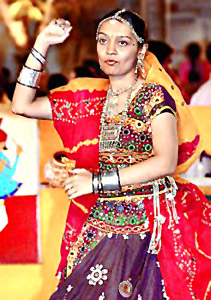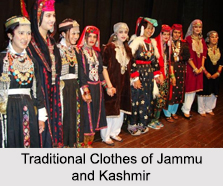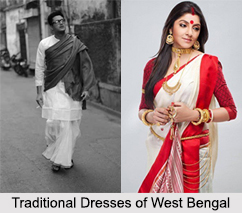 Costumes of Kutch is exquisitely stylized and intricately embroidered, the kutchi attire is simply eye-catching. Dazzling with vibrant colours, flooded with striking mirror work and stunning jewellery it`s one of the most alluring customs in India. The mirror work and embroidery work forms an integral part of Kutchi. Handicrafts irrespective of the community or ethnic group to which they belong, however the workmanship differs. In fact the various communities can be identified by the pattern of handicrafts and dress or costumes they were. For instance, the Garacia Jat women wear only red or black chunis while Rabari women wear black open blouses or cholis with odhnis to cover head.
Costumes of Kutch is exquisitely stylized and intricately embroidered, the kutchi attire is simply eye-catching. Dazzling with vibrant colours, flooded with striking mirror work and stunning jewellery it`s one of the most alluring customs in India. The mirror work and embroidery work forms an integral part of Kutchi. Handicrafts irrespective of the community or ethnic group to which they belong, however the workmanship differs. In fact the various communities can be identified by the pattern of handicrafts and dress or costumes they were. For instance, the Garacia Jat women wear only red or black chunis while Rabari women wear black open blouses or cholis with odhnis to cover head.
In the rural areas women wear Chaniya choli during the whole year, Chaniya choli`s are of many designs and fashion. Typical Kutchi costume is incomplete without `Abha` or `Kanjari`. `Abha` is the name of the typical choli worn by women folk and `Kanjari` is a long blouse beautifully embroidered and with mirror work. Most men in Kutch wear loose trousers, a long-sleeved under-jacket, and a short coat, a plain or silk-bordered cloth. Normally men prefer white clothes except the Muslims who prefer colored clothes.
Abhas, the traditional costume of the region of Kutch, has entered the world of high fashion. Successfully adapted to modern styles by Anjali Mangaldas, this beautiful garment has become a rage with the fashion conscious women.
In the village of Kutch, the women looked beautiful in their fabulous Abhas as they swayed to the music. The twinkling lights played mischievously over the gold and thread embroidery while the sequins and badla work sparkled continuously. A woman in an abha, the traditional costume of the Khatri, Memon and Korja Muslim communities of Kutch is a sight to behold. This garment from Kutch, a district in Gujarat, has a history that is as colourful and exciting as the garment. In ancient times the women wore the abha embellished with beautiful tie-dye designs, zari thread embroidery that was very minute and intricate embroidery in coloured silk or cotton thread in a combination of a variety of stitches, integrating minuscule mirror discs into its elaborate and distinct pattern.
The word abha-has been derived from aba a word commonly used in the Middle Eastern countries which means a top garment or a mantle. The abha based on an age-old traditional classical cut and style, is basically a kalidar kurta without a slit on the sides, with a lose flair and it hangs lower than a normal kurta. The abha has been a collector`s item since the last four generations. The abha has been a collector`s item since the last four generations. The best have even been part of collections auctioned in the west by Christys and Sothebys Research scholars have not yet been able to pinpoint the historical period or influence on these costumes. Unfortunately modernity has compelled these lovely costumes into museums or wooden boxes in far off villages. The genuine abhas could be date back nearly a century.





















